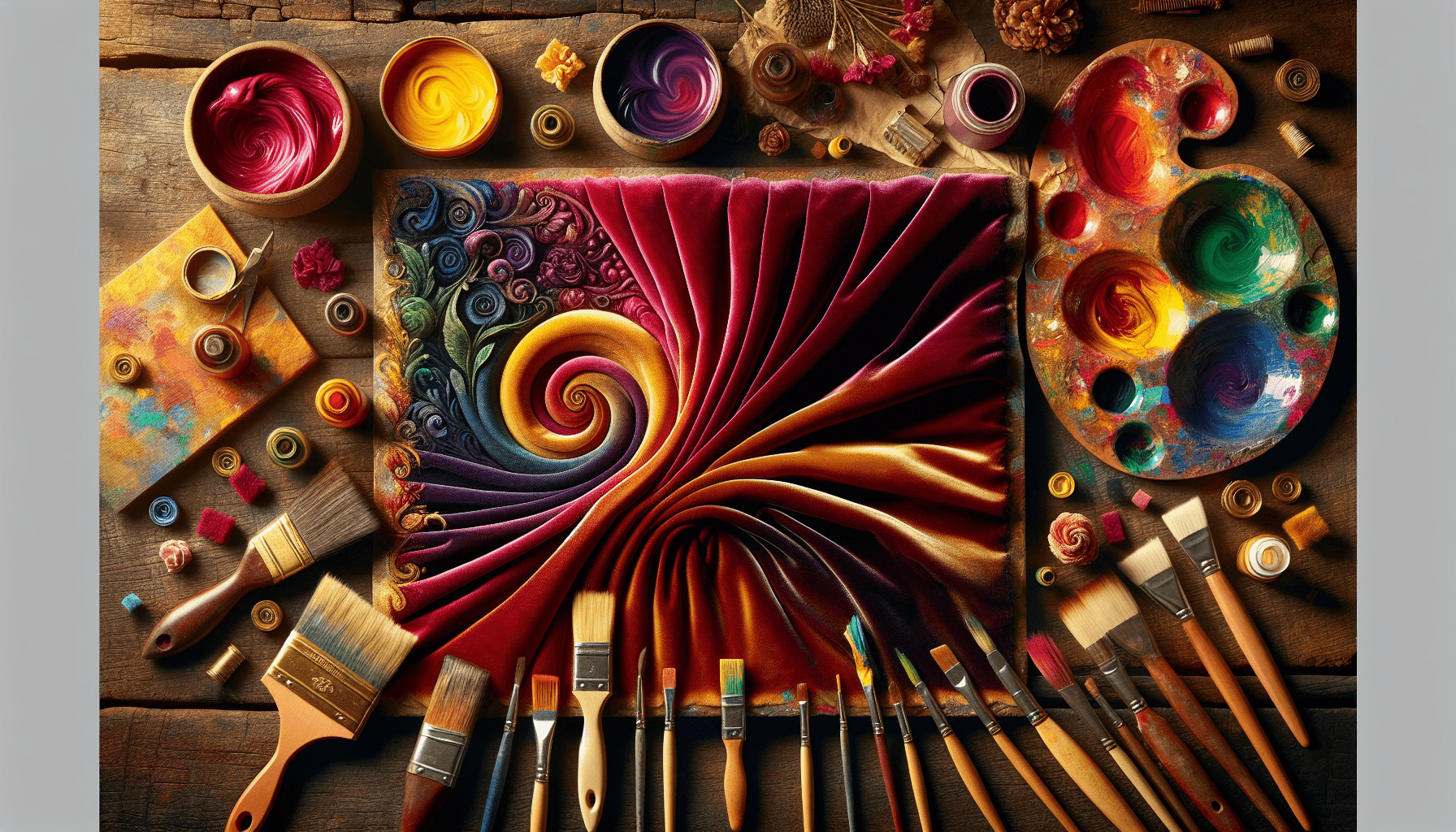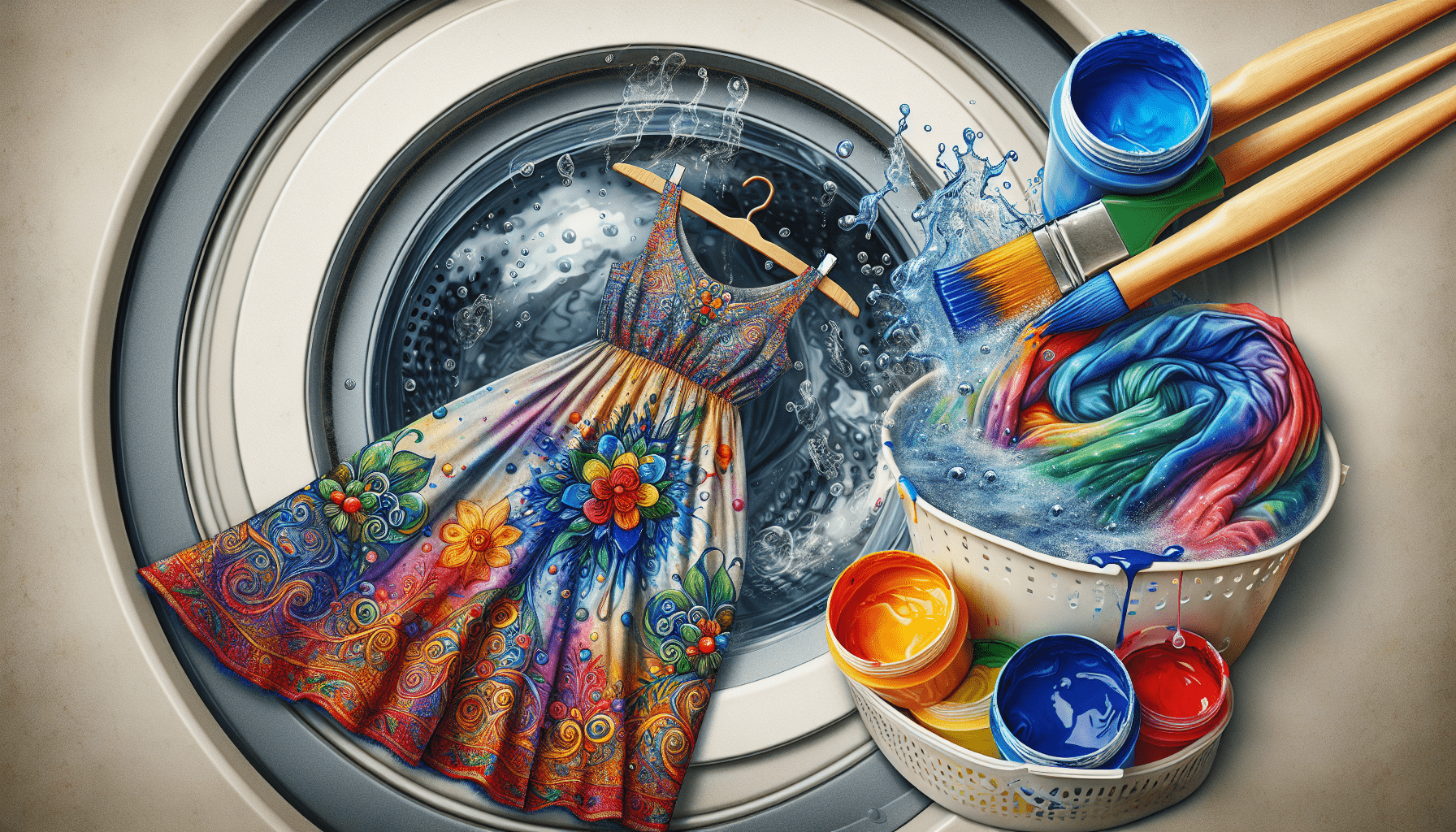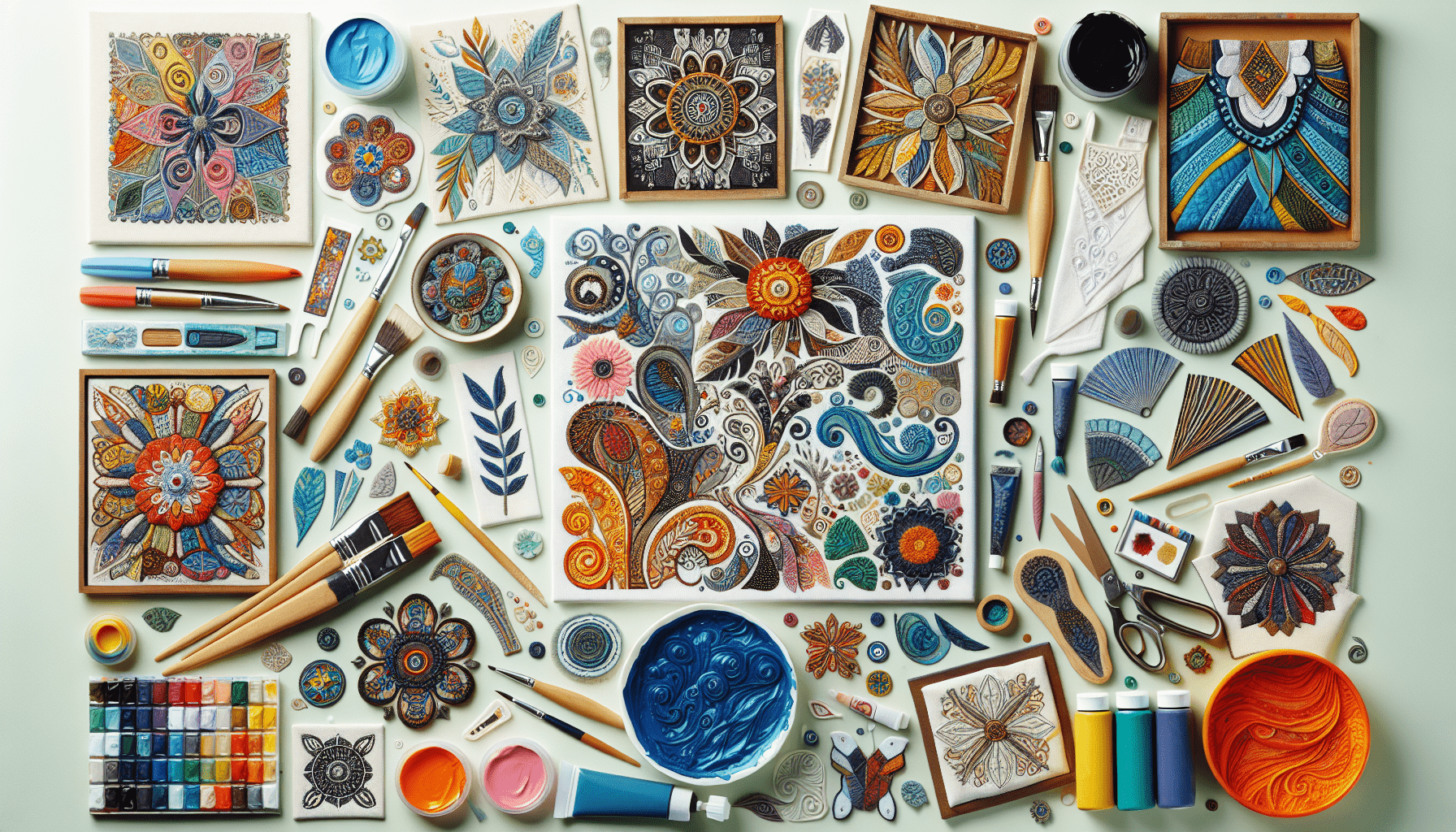Fabric paint is a popular choice among DIY enthusiasts and professionals alike, offering a creative and long-lasting way to add vibrant designs to various textiles. But the burning question remains: is fabric paint permanent? In this article, we will explore the qualities and durability of fabric paint, providing you with essential insights to help you make informed decisions for your artistic projects. Whether you are a seasoned fabric painter or a curious beginner, read on to discover the key factors that determine the permanence of fabric paint, and uncover tips for ensuring your designs stand the test of time.
Definition of Fabric Paint
What is fabric paint?
Fabric paint is a type of paint specifically designed for use on fabrics. It is formulated to adhere to various types of fabrics and provide a lasting color effect. Unlike regular acrylic or oil paints, fabric paint is made to withstand washing and wear, ensuring that the colors remain vibrant and permanent on fabric surfaces.
Types of fabric paint
There are several types of fabric paint available in the market, each with its unique characteristics and application methods. Some common types include:
-
Acrylic Fabric Paint: This type of fabric paint is water-based and can be easily applied with brushes, sponges, or stencils. It dries quickly, has excellent color retention, and creates a soft, flexible finish.
-
Screen Printing Ink: Used primarily for screen printing designs on fabric, this type of fabric paint is opaque and provides a durable, long-lasting print. It is applied using screen printing techniques, requiring a screen, squeegee, and stencil.
-
Spray Fabric Paint: Spray fabric paints are convenient for larger projects or when a more lightweight, effortless application is desired. They come in aerosol cans and allow for a quick, even coverage of fabric surfaces.
-
Puff Paint: Also known as dimensional fabric paint, puff paint creates a raised, textured effect on fabric. It is applied directly from tubes or bottles and can be used to add details or embellishments to fabric projects.
-
Tie-Dye Paint: Popular for creating vibrant, psychedelic patterns on fabric, tie-dye paint is often sold in kits with pre-measured dyes. It is applied by folding, twisting, or tying fabric and applying the paint to achieve unique designs.
Factors Affecting the Permanence of Fabric Paint
The permanence of fabric paint depends on various factors, including:
Type of fabric
Different fabrics have different structures and compositions, which can affect how fabric paint adheres and reacts. Natural fibers such as cotton and linen tend to absorb fabric paint more effectively, resulting in better color retention. Synthetic fibers like polyester may require specific types of fabric paint that are designed to bond with these materials.
Type of paint
Choosing the right type of fabric paint for the specific project and fabric is crucial in ensuring its permanence. As mentioned earlier, each type of fabric paint has its unique characteristics and application methods. Understanding the properties of the paint and how it interacts with the fabric is essential for achieving long-lasting results.
Application method
The way fabric paint is applied can also impact its permanence. Proper preparation of the fabric surface, such as pre-washing to remove any sizing or residue, can improve paint adhesion. Additionally, applying multiple thin layers of paint, allowing each layer to dry before adding the next, can create a more durable and even color application.
Heat setting
heat setting is a crucial step in ensuring the permanence of fabric paint. It involves applying heat to the painted fabric using an iron, heat press, or oven. The heat helps to bond the paint molecules to the fabric fibers, making them more resistant to fading and washing. Follow the specific instructions provided by the fabric paint manufacturer for the appropriate heat setting method.

Testing Fabric Paint’s Permanence
Before committing to a fabric paint for your project, it is important to test its permanence. Here are some tests you can perform:
Initial paint application
Apply a small amount of fabric paint to a scrap piece of fabric similar to the one you will be using for your project. Follow the recommended application method and allow the paint to dry completely. Assess the color vibrancy, texture, and adhesion to determine if the paint meets your desired permanence requirements.
Washing tests
After the painted fabric has dried, launder it according to the fabric paint manufacturer’s instructions. This typically involves washing the fabric in cold water with a mild detergent. After washing, evaluate the colorfastness of the paint by checking if there is any significant fading or bleeding. Repeat the washing test a few times to ensure the paint holds up under repeated laundering.
Rubbing tests
Rub the painted fabric vigorously with a clean, white cloth or paper towel. If the paint easily transfers onto the cloth, it may indicate poor adhesion or insufficient drying time. A durable fabric paint should withstand moderate rubbing without significant color transfer.
Permanent Fabric Paint Brands
When it comes to fabric paint, certain brands have established a reputation for their quality and permanence. Here are three brands known for their long-lasting fabric paints:
Brand A
Brand A offers a range of fabric paints that are specifically formulated for optimal permanence. They have excellent color retention, even after multiple washes, and adhere well to various types of fabrics. Brand A’s fabric paints are available in a wide array of colors and finishes, providing versatility for different projects.
Brand B
With a focus on environmental sustainability, Brand B offers fabric paints that are not only permanent but also eco-friendly. Their paints are made from non-toxic, water-based formulas, ensuring safety for both the user and the environment. Brand B’s fabric paints have been tested for durability and have shown exceptional color retention and resistance to washing.
Brand C
Brand C takes pride in its wide range of vibrant fabric paints that are known for their superior permanence. Their paints are specially formulated to bond with fabric fibers, creating a long-lasting color effect that can withstand frequent washing and wear. Brand C also offers a variety of specialized fabric paints, such as glow-in-the-dark or metallic finishes, to add unique elements to fabric projects.

Techniques to Enhance Durability
To maximize the durability of fabric paint on your projects, consider implementing the following techniques:
Prepping the fabric
Properly preparing the fabric before painting is crucial for achieving long-lasting results. Pre-wash the fabric to remove any sizing, dirt, or chemicals that could hinder paint adhesion. If necessary, iron the fabric to remove any wrinkles or creases that may affect the paint application. Prepping the fabric ensures a clean, smooth surface for the paint to adhere to.
Proper painting techniques
When applying fabric paint, using proper painting techniques can contribute to its durability. Avoid applying thick, gloppy layers of paint, as this can lead to cracking or flaking over time. Instead, opt for multiple thin layers, allowing each layer to dry completely before adding the next. This creates a stronger bond between the paint and fabric, minimizing the risk of peeling or fading.
Heat setting methods
As mentioned earlier, heat setting is vital for enhancing the permanence of fabric paint. There are different heat setting methods, depending on the type of fabric paint used. Some fabric paints require ironing on the reverse side of the painted fabric for a specific duration, while others may require a heat press or oven. Follow the instructions provided by the fabric paint manufacturer for the recommended heat setting method to ensure optimal permanence.
Common Mistakes That Affect Permanence
To avoid compromising the permanence of fabric paint, be mindful of these common mistakes:
Skipping heat setting
Failing to properly heat set fabric paint is one of the most common mistakes made. Skipping this crucial step can result in the paint not fully bonding with the fabric fibers, leading to poor adhesion and increased susceptibility to fading or washing out. Always follow the heat setting instructions provided by the fabric paint manufacturer to ensure the best possible results.
Not washing the fabric before painting
Painting on unwashed fabric can have negative effects on the permanence of the paint. Fabrics often contain sizing or other chemical treatments that can interfere with paint adhesion. Washing the fabric before painting removes these substances and creates a clean surface for the paint to adhere to.
Poor paint to fabric adhesion
Insufficient paint to fabric adhesion is another reason for paint durability issues. Applying paint to fabrics that are heavily treated with fabric softeners, conditioners, or other substances can hinder adhesion. It is essential to ensure the fabric is clean and free from any residues that could compromise the paint’s ability to bond with the fibers effectively.
Fabric Paint vs. Fabric Dye
Understanding the differences between fabric paint and fabric dye is important when considering the permanence of color on fabrics. Here are key distinctions between the two:
Differences between fabric paint and dye
Fabric paint sits on the surface of the fabric, creating a colored layer that adheres to the fibers. In contrast, fabric dye penetrates the fabric, bonding with the fibers themselves. This fundamental difference impacts how the colors interact with the fabric and how long they will last.
Fabric paint allows for more precise control over color application, as it can be used to create intricate designs or patterns. Fabric dye, on the other hand, tends to create more uniform and blended colors.
Which is more permanent?
Fabric dye is generally considered to be more permanent than fabric paint. This is because dyes penetrate the fabric fibers, becoming an integral part of the fabric structure. In contrast, fabric paint forms a layer on the surface of the fabric, making it more susceptible to wear, fading, and washing out over time.
That being said, with proper application, heat setting, and selection of high-quality fabric paint, it is possible to achieve long-lasting and durable results comparable to fabric dye.
How to Care for Fabrics with Paint
Proper care and maintenance are essential for preserving the color and longevity of fabrics decorated with paint. Follow these guidelines for optimal fabric care:
Proper washing and drying techniques
Always refer to the fabric paint manufacturer’s care instructions for the specific washing and drying recommendations. In general, it is advisable to wash painted fabrics in cold or lukewarm water using a mild detergent. Avoid using bleach or harsh chemicals that can weaken or fade the paint. When drying, air drying or using a low heat setting in the dryer is recommended to prevent excessive heat damage to the paint.
Storage tips
When storing garments or fabric items decorated with paint, take precautions to avoid prolonged exposure to direct sunlight or extreme heat. These conditions can expedite the fading and degradation of the paint. If possible, store painted fabrics in cool, dry areas away from direct sunlight to maintain their color vibrancy for longer periods.
Alternative Options for Permanent Fabric Decoration
While fabric paint is a popular choice for permanent fabric decoration, there are also alternative options available. These alternatives offer different techniques and effects. Consider the following options:
Fabric markers
Fabric markers are specifically designed for drawing and coloring on fabrics. They offer precise control, allowing for detailed designs and fine lines. Fabric markers are available in a range of colors and sizes, providing versatility for various projects. Like fabric paint, the permanence of fabric markers can be enhanced through heat setting techniques.
Fabric transfer paper
Fabric transfer paper enables the transfer of designs or images onto fabric. These papers are specially coated with ink-receptive layers that allow for high-quality transfers. Designs can be printed onto the paper using a standard inkjet printer, and then transferred to fabric using heat. Fabric transfer paper offers the advantage of detailed, full-color designs that adhere to the fabric permanently.
Conclusion
In conclusion, fabric paint is a versatile and permanent solution for adding color and creativity to fabrics. By understanding the factors affecting permanence, testing paint’s durability, using high-quality brands, implementing durability-enhancing techniques, and avoiding common mistakes, you can achieve long-lasting results on your fabric projects. While fabric dye may generally offer greater permanence, fabric paint can create vibrant designs and patterns with proper application and care. Explore the various fabric paint options available, follow recommended techniques, and enjoy the lasting beauty of painted fabrics.



